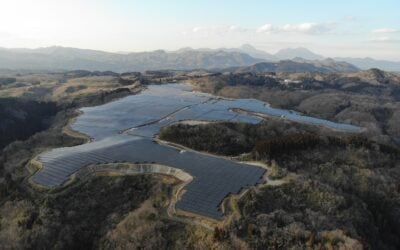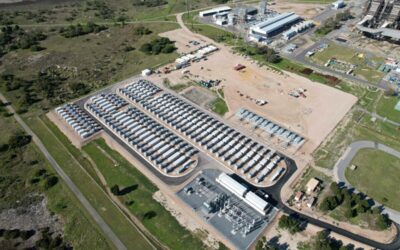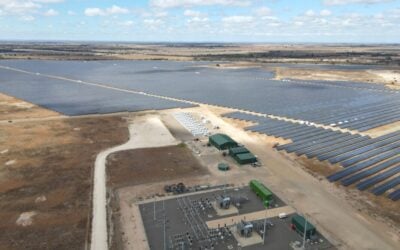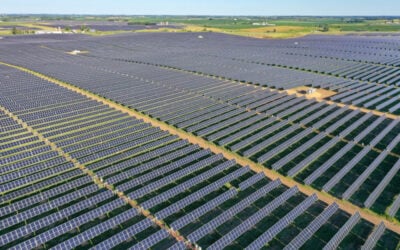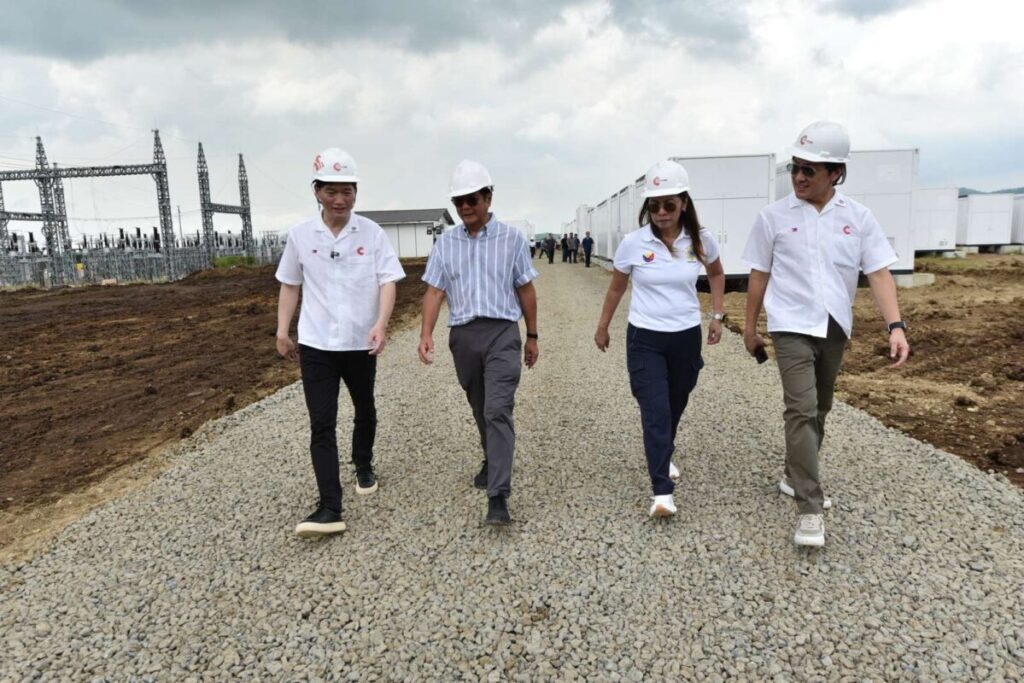
President of the Philippines, Ferdinand Marcos Jr., was in attendance as the country’s first ‘baseload’ power plant to combine solar PV and battery storage officially went into action.
President Marcos Jr. ceremonially led the energisation of Citicore Renewable Energy’s Citicore Solar (CS) Batangas 1 project yesterday (15 September).
The power plant pairs a 197MWp solar PV array with a 320MWh battery energy storage system (BESS). Developer Citicore Renewable Energy Corporation said this enables it to output energy to the local grid outside the hours of 6am to 5pm when the solar PV modules are generating power.
Philippine Stock Exchange (PSE) listed CREC describes the plant as one of its strategic freehold land assets, and a key project in the sustainable diversification of the company’s portfolio.
Enjoy 12 months of exclusive analysis
- Regular insight and analysis of the industry’s biggest developments
- In-depth interviews with the industry’s leading figures
- Annual digital subscription to the PV Tech Power journal
- Discounts on Solar Media’s portfolio of events, in-person and virtual
It is in Tuy, a municipality in the province of Batangas, around 100km south-west of the capital, Manila. Batangas is a popular tourist region and home to a major international port.
In a speech at the event, the president noted that he had long considered the strong potential of renewable energy even before taking office. However, he was aware of competing land use with other needs, such as agriculture, barriers in terms of cost, and the limitations of variable generation.
Without the viable storage of electricity to provide a so-called baseload energy supply, there would be no choice but to return to fossil fuels, especially for industries that require 24/7 power.
Yet, Marcos Jr. said, solar PV technologies have improved and come down in cost, as have batteries.
“With the advent of actual reliable and viable energy battery technology, we can now get around that problem,” the president said.
“We can now get around that weakness of renewable energy because of battery technologies, will be able to collect power and to continue to provide that power even when there is no sun.”
The president also commended the fact that the site’s solar PV array has been installed in accordance with the principles of agricultural photovoltaics (aka agrivoltaics, or agro-solar), which combine dual land use for generation technology with crop growing.
Perhaps significantly, from a regulatory perspective, as we advance, the land at CS Batangas 1 is now explicitly classified for agro-solar usage, something that could ease permitting constraints and development lead times for such projects while helping create a balance of land use categorisation.
Marcos JR. said this was one example of how the government needs to “catch up to the technology that our private sector partners are providing.”
Indeed, Citicore Renewable Energy Corporation said that agro-solar initiatives, begun in 2021, will be implemented in all of its completed projects.
The company is aiming to deploy 1GW of solar PV projects by the first quarter of 2026, alongside 1.5GWh of battery storage. In December 2024, CREC signed a BESS supply deal with Chinese PV inverter and battery storage manufacturer Sungrow for that capacity of Sungrow’s PowerTitan 2.0 battery storage system.
PowerTitan 2.0 is liquid-cooled and integrates a 2.5MW power conversion system (PCS) and 5MWh of battery capacity into a standard 20-foot ISO container.
The Sungrow deal was announced in late 2024. Around the same time, our colleagues at PV Tech reported that CREC had signed a 2GW n-type tunnel oxide passivated contact (TOPCon) PV module supply deal with another Chinese company, Trinasolar.
Philippines adopting batteries with and without solar PV
Marcos Jr. has also been an advocate for battery storage and localised battery manufacturing, attending past inaugurations for BESS projects and a gigawatt-scale lithium battery factory (‘gigafactory’) over the past couple of years.
At a national level, the Philippines has for the past three years or so seen a mini-boom in the deployment of short-duration battery storage systems at thermal power plants owned by the country’s major power producers.
These systems help increase the efficiency of those legacy fossil fuel assets in delivering frequency regulation and other ancillary services, reducing their emissions in the process.
In terms of solar-paired energy storage projects, the Philippines’ first went online in 2022, a pilot by AC Energy (ACEN) in Alaminos, Laguna province, combining 40MW of BESS with 120MW of solar PV. This is of course, however, a short-duration battery asset versus the type of baseload solution in Batangas.
President Marcos JR. was also present last year as ground was broken on the Meralco Terra Solar project in Gapan City. At the time, it was considered the largest solar-plus-storage project in construction anywhere in the world, with 3.5GWp of solar and 4.5GWh of BESS capacity.
The government has also sought to spur further renewables-plus-storage development, with hybrid projects eligible to participate in the currently open fourth round of its Green Energy Auction (GEA-4) series. A targeted 10GW of generation-plus-storage projects will win government contracts if successful.
Energy-Storage.news publisher Solar Media will host the 2025 Energy Storage Summit Asia in Manila, Philippines, next month, 7-8 October.

